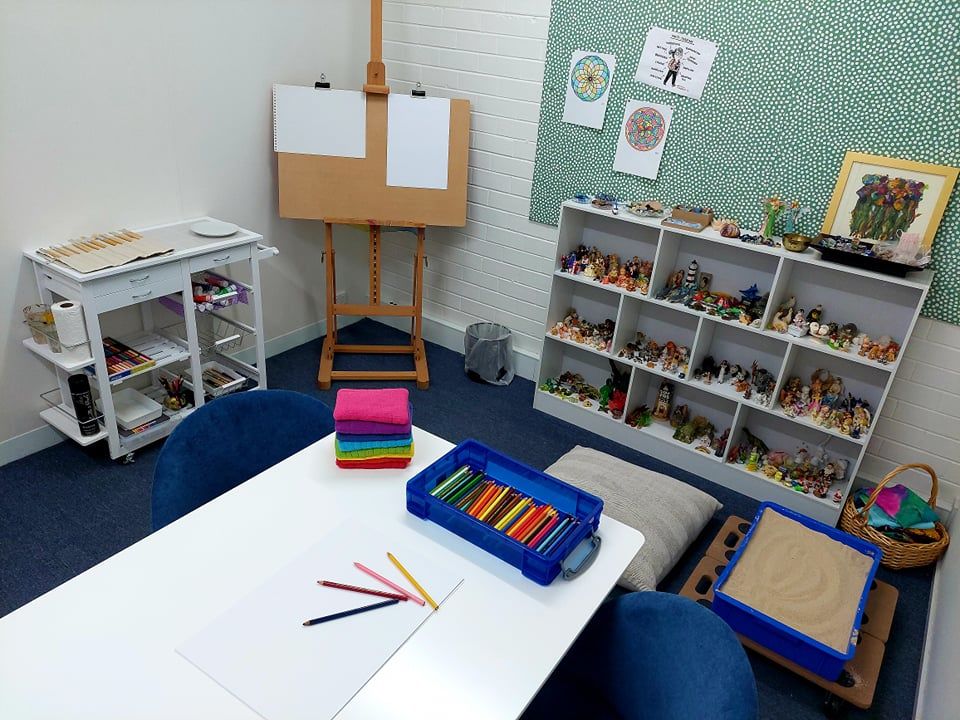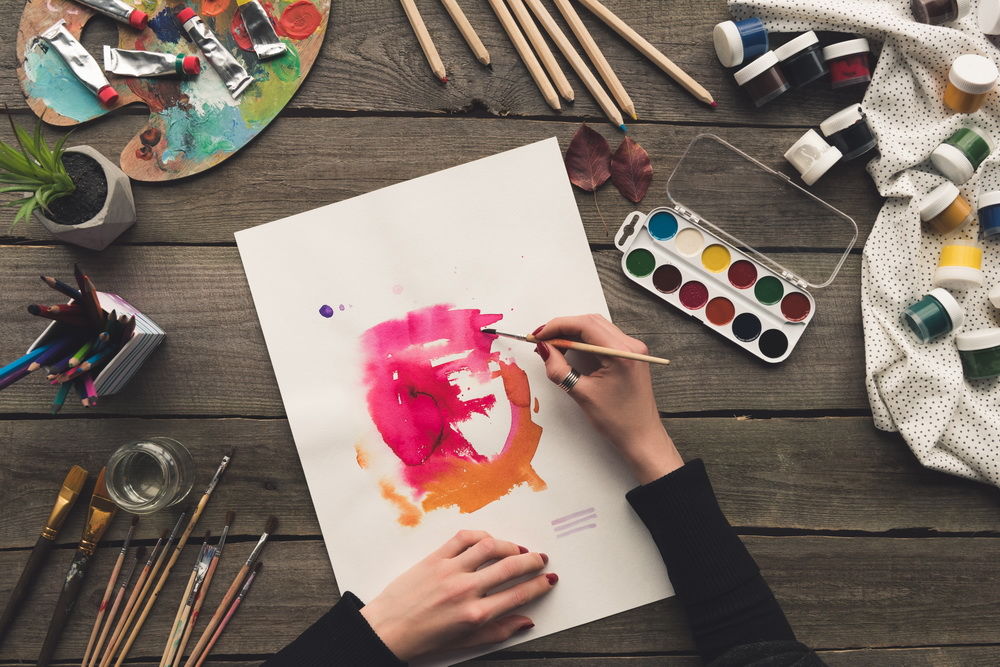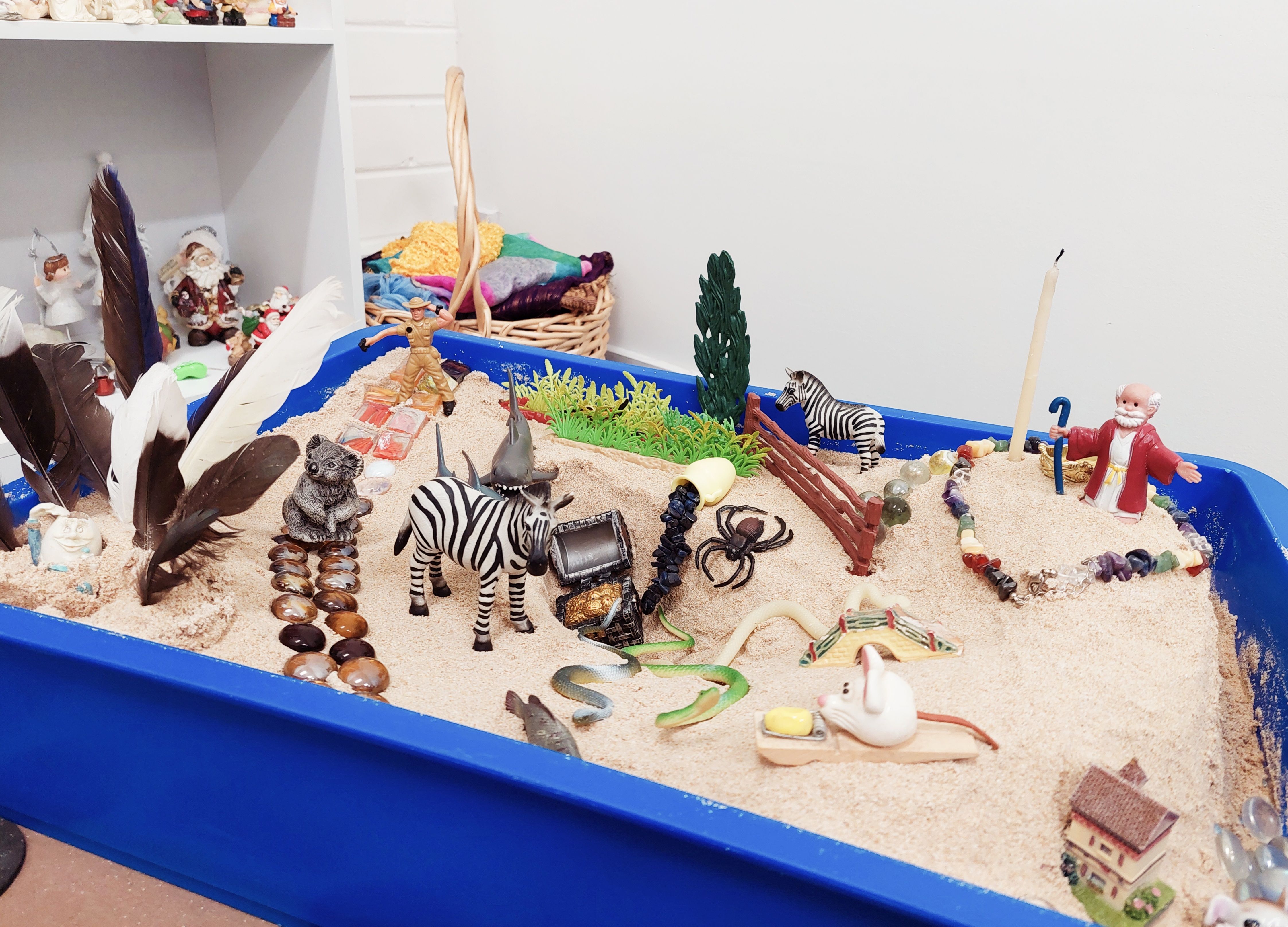Expressive Art Therapy
| When words are not enough, there's ART. Expressive arts therapy is a form of psychotherapy that uses different types of creative arts to promote emotional growth and healing. It is based on the idea that creating art can help people express and understand their feelings, thoughts, and experiences in a safe and supportive environment. The focus is not on the final product, but on the process of expressing yourself and discovering new insights about yourself and your feelings. Expressive arts therapy can help people who are facing various challenges, such as trauma, stress, anxiety, depression, grief, or relationship issues. It can also help people who want to enhance their self-awareness, creativity, and well-being. Expressive arts therapy works by engaging multiple senses and modes of expression, such as painting, drawing, craft, music, writing, poetry, or sand tray therapy. Expressive arts therapy can benefit people of all ages, from children to older adults.
|
The therapist guides the client to explore their inner and outer world through the creative process, and then helps them reflect on what they have created and how it relates to their situation. The therapist does not judge or interpret the client's art, but rather facilitates a dialogue between the client and their own artistic expression. You do not need to be artistic or skilled in drawing to benefit from this therapy. Expressive arts therapy can be done individually or in groups, depending on the client's needs and preferences. - It can be especially helpful for children who may have difficulty verbalizing their emotions or coping with stressful events - It can be beneficial for adults of all ages who may want to review and make meaning of their lives If you are interested in expressive arts therapy or want to learn more about it, please talk to us. |
Sand Tray Therapy
| Sand tray therapy is a form of expressive therapy that uses a sandbox, miniature figures, and sometimes water, to create scenes of miniature worlds that reflect a person's inner thoughts, struggles, and concerns. This form of therapy is practiced along with talk therapy, using the scenes created by the client as a springboard for discussion. This technique facilitates the expression of emotions and the exploration of the unconscious. Some reasons why you might choose sand tray therapy are: - It can facilitate non-verbal communication and expression of feelings that are difficult to put into words. - It can stimulate creativity and imagination, as well as foster a sense of playfulness and curiosity. - It can provide a safe and contained space for clients to work through their conflicts, traumas, fears, or fantasies. - It can reveal unconscious patterns, themes, or symbols that can offer insights into the client's personality and issues. - It can promote healing and integration by allowing clients to access and reorganize their inner resources. Sand tray therapy can be helpful for people of all ages. Sandplay therapy is based on Jungian principles and focuses on the activation of the healing potential of the psyche through symbolic expression in the sand. Sand tray therapy, on the other hand, is more eclectic and may incorporate various theoretical orientations and verbal interventions. If you are interested in Sand tray therapy or want to learn more about it, please talk to us. | Example of a Sand tray therapy sceneThe inner story in the sand. This exercise is completed without speaking as placing items (symbols) into the sand becomes an unconscious motion to uncover deeper meaning in a strong visual representation.
HISTORY Sand tray therapy has a long history that can be traced back to the 1920s, when British paediatrician and child psychiatrist Margaret Lowenfeld developed the World Technique, inspired by her experiences in war-torn Europe and her readings of H.G. Wells' Floor Games. Lowenfeld observed that children could communicate their inner worlds more effectively through play than through words. She provided them with trays of sand and a collection of small toys, and let them create their own worlds in the sand. Lowenfeld's approach was influenced by Jungian psychology and Buddhist philosophy, and she believed that the sand tray scenes reflected the person's psyche and could reveal hidden aspects of their personality. |




